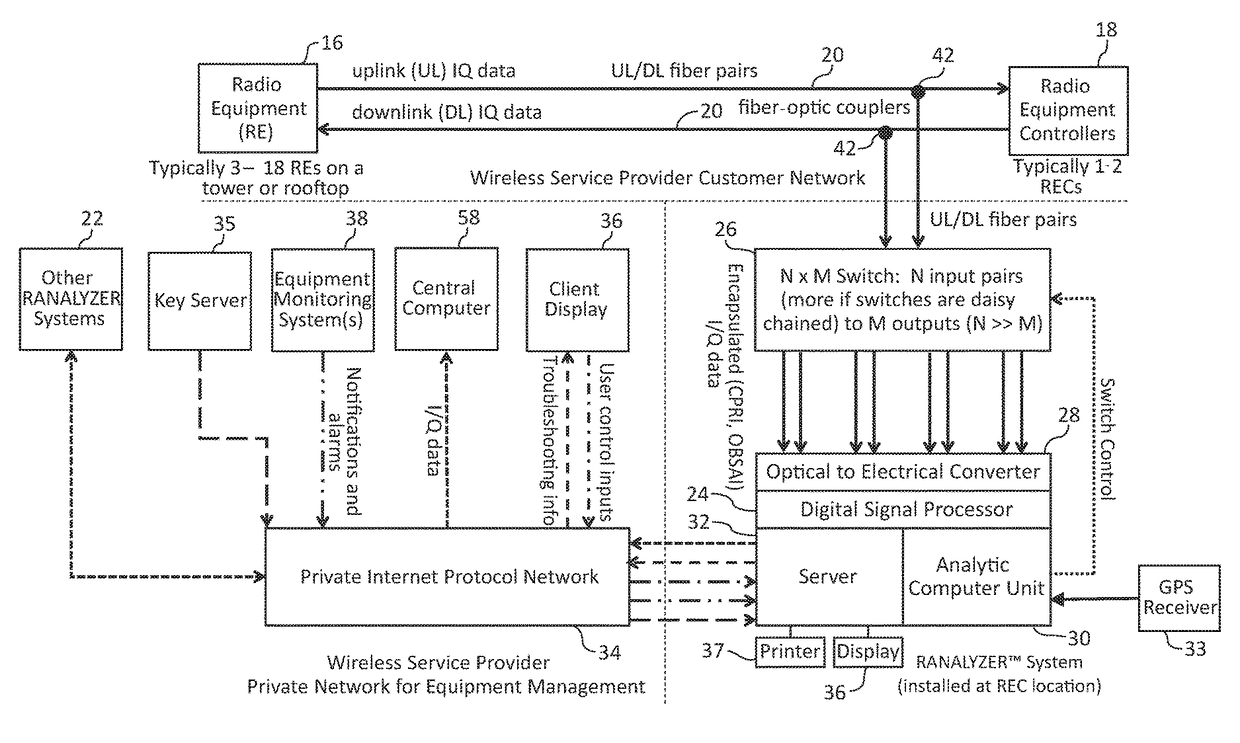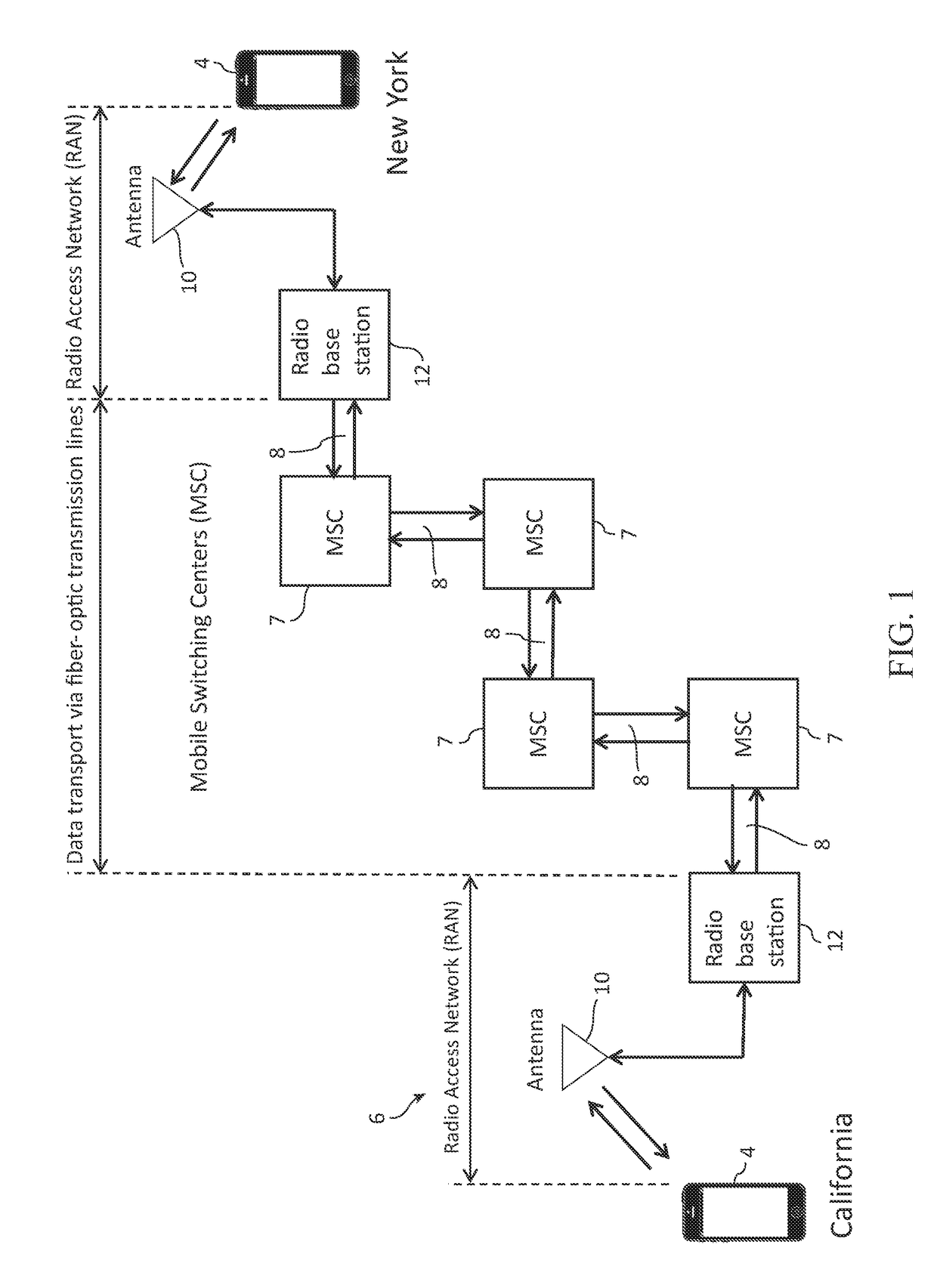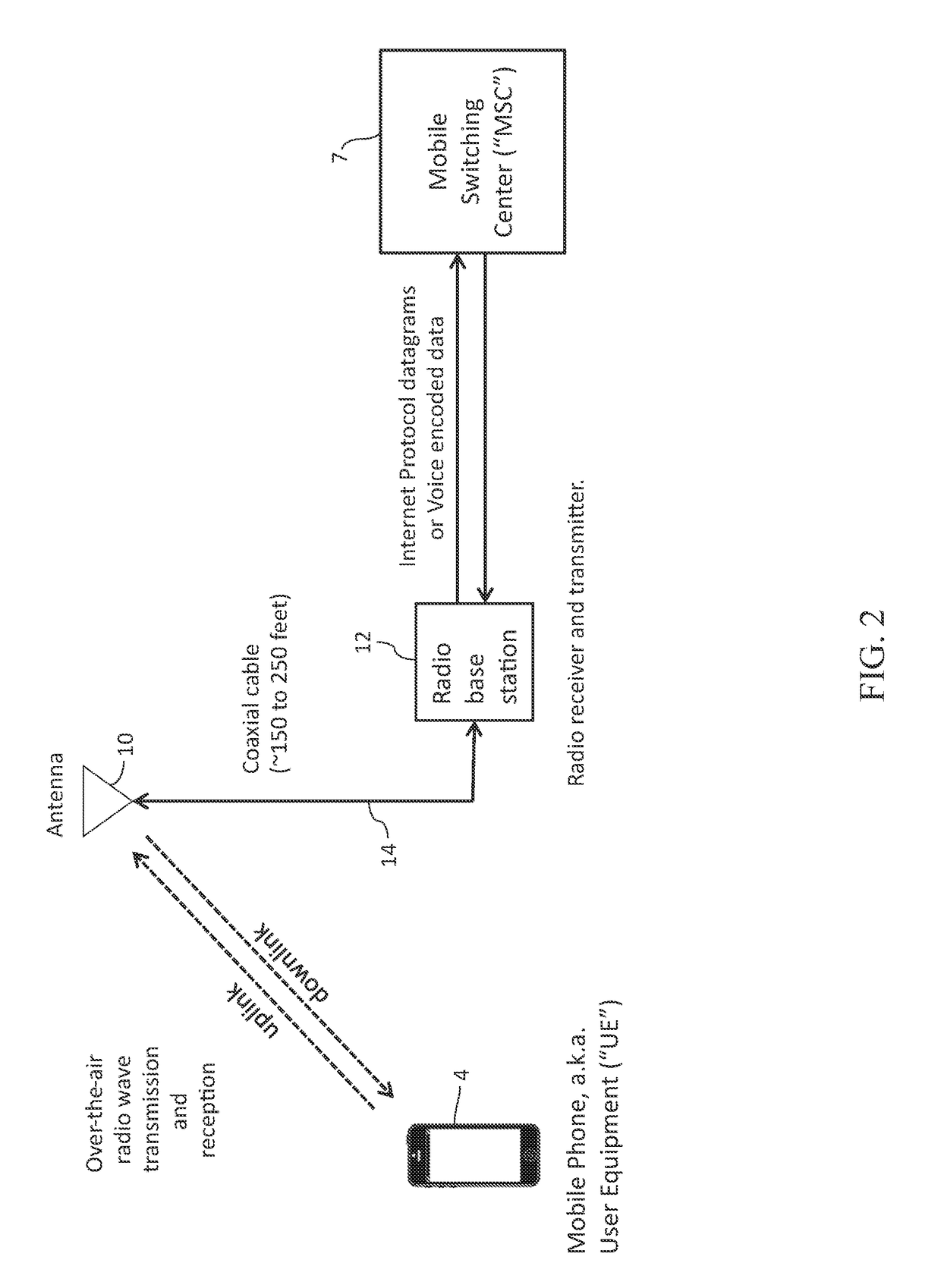If the
digital signal (1s and 0s) is not received exactly as it was transmitted, then there is
distortion in the
audio signal, and the person at the receiving end may not understand the conversation.
Every receiving device has an SINR at which it can no longer correctly recover the
signal that was sent by the
transmitter.
The environment in which pressure
waves are transmitted by a talker to a
microphone (item 1) and from a speaker to a listener (item 5) can be a significant source of
distortion in the quality of the end-to-end conversation (example: talking or listening in a crowded, noisy room).
However, this SINR environment is outside the control of the
Wireless Service Provider (WSP), so it is not a process the WSP tries to quantify, measure, and manage.
If a device outside the control of the wireless
service provider is broken and transmitting radio energy on the same frequency as the wireless
service provider's network
receiver, then this causes
high variability in the interference part of the SINR equation.4. The equipment that is used to transmit and receive radio
waves over-the-air is exposed to harsh weather conditions while the equipment used for
fiber-optic transmission is housed in environmentally-controlled offices.
Therefore, the
radio transmission and reception equipment is more prone to degradation and failure.
If there is
high variability in the system, it is much more difficult to achieve high reliability.
In addition to the reliability problems, there are also capacity constraints in the RAN environment.
Because there is a limited supply of
frequency spectrum, and because of the growth in demand for wireless services by consumers, the cost for these licenses has risen dramatically.
SINR=signalpowerlevelinterference+
noisepowerlevelWhen SINR goes down, reliability, capacity, and data
throughput all go down.When signal power goes down, SINR goes down.When
noise or interference goes up, SINR goes down.2. The most disadvantaged
receiver in all wireless telecom networks 2 is the receiver in the network 2 that must recover the
radio signal transmitted by the
mobile phone 4.The transmit power of the
mobile phone 4 cannot be increased because of safety concerns and because of practical limitations on size and battery power.
This technique works because the probability is very low that both antennas 10 will experience
fading by the changing RAN environment at the same time.4. Under normal operating conditions, the
noise power level (in the denominator of the SINR equation) is predictable and the interference is non-existent; however, there are often problems in the RAN environment that cause the interference and
noise power level to be unpredictable.
However, because of
zoning restrictions and practical economic and construction limitations, wireless service providers cannot put receivers everywhere they want.
If a connection between a
mobile phone transmitter and the network receiver is operating near that limit and the interference or
noise level rises, the radio link can become unusable; then speech becomes garbled or in the worst case the call drops.
While
fading can cause short term differences, if the difference is large and stays for a while, something else is causing the problem.
The most common causes are a failed antenna or connecting cable in one
branch.
These can be outright failures, such as a broken cable, but are more commonly a subtler problem such as Passive
Intermodulation Distortion.High RSSI (Received
Signal Strength Indicator).
In those circumstances, the RF energy from the mobile phone 4 is considered noise by the other receivers.In most cases, the reason that RSSI is too high is because there is unwanted noise or interference coming into the receiver.
There are many potential causes of problems in the RAN 6, but the common of them are:Interference from an external
transmitter (one that is not under the control of the wireless
service provider) that is broken and creating noise in the wireless service provider's
frequency spectrum.
The key point of the table is that the alarms and notifications are generally insufficient by themselves to diagnose and repair the root causes of the problems.
However, problems are often intermittent (i.e. PIM only when it is windy or intermittent interference).
There is a high cost of mis-diagnosis:Direct cost: wireless service providers spend thousands (sometimes 10s of thousands) of dollars changing antennas and / or transmission lines only to find that the repair did not fix the problem.
)Indirect cost: money and man-hours that could have been spent building out the new network.
 Login to View More
Login to View More  Login to View More
Login to View More 


